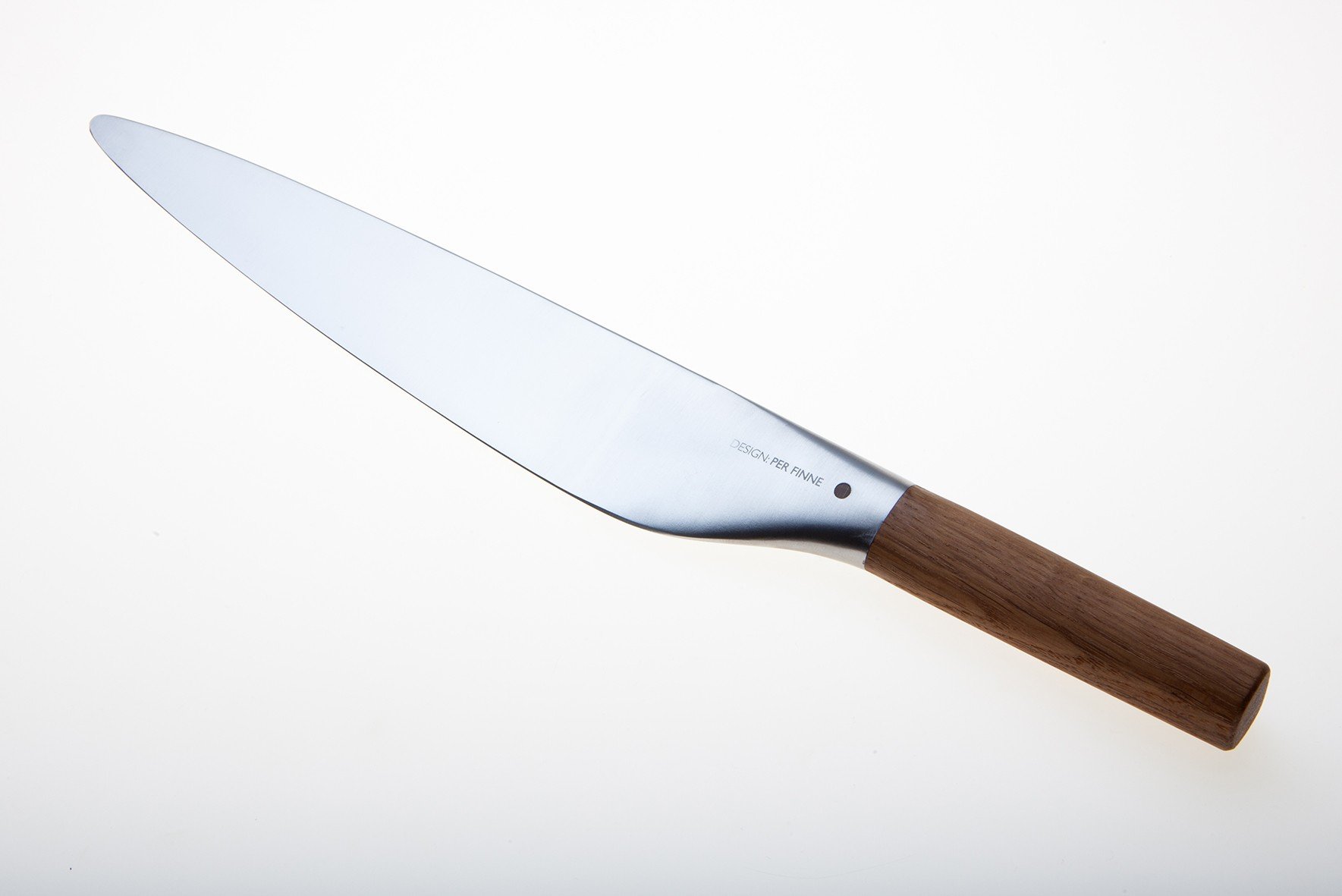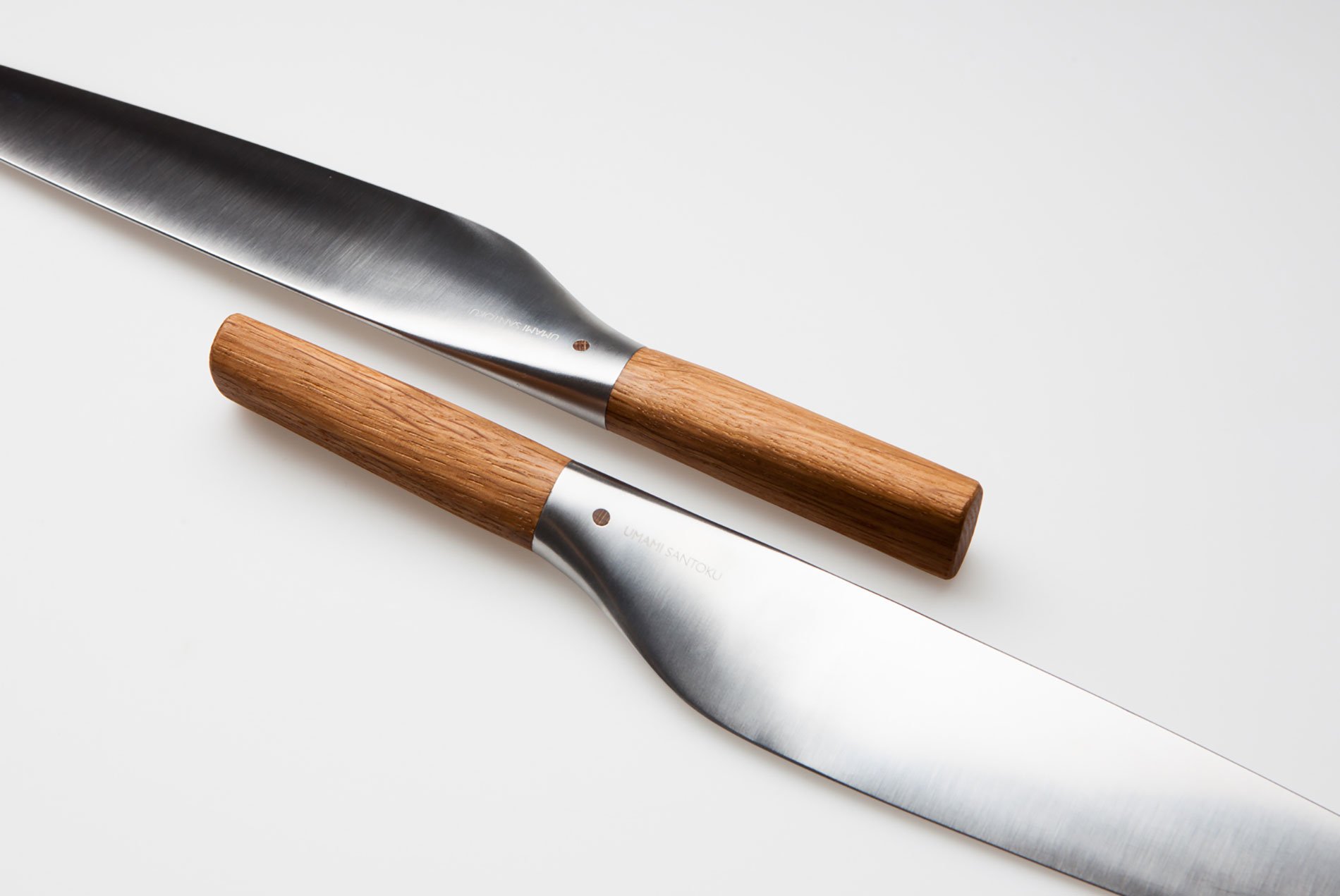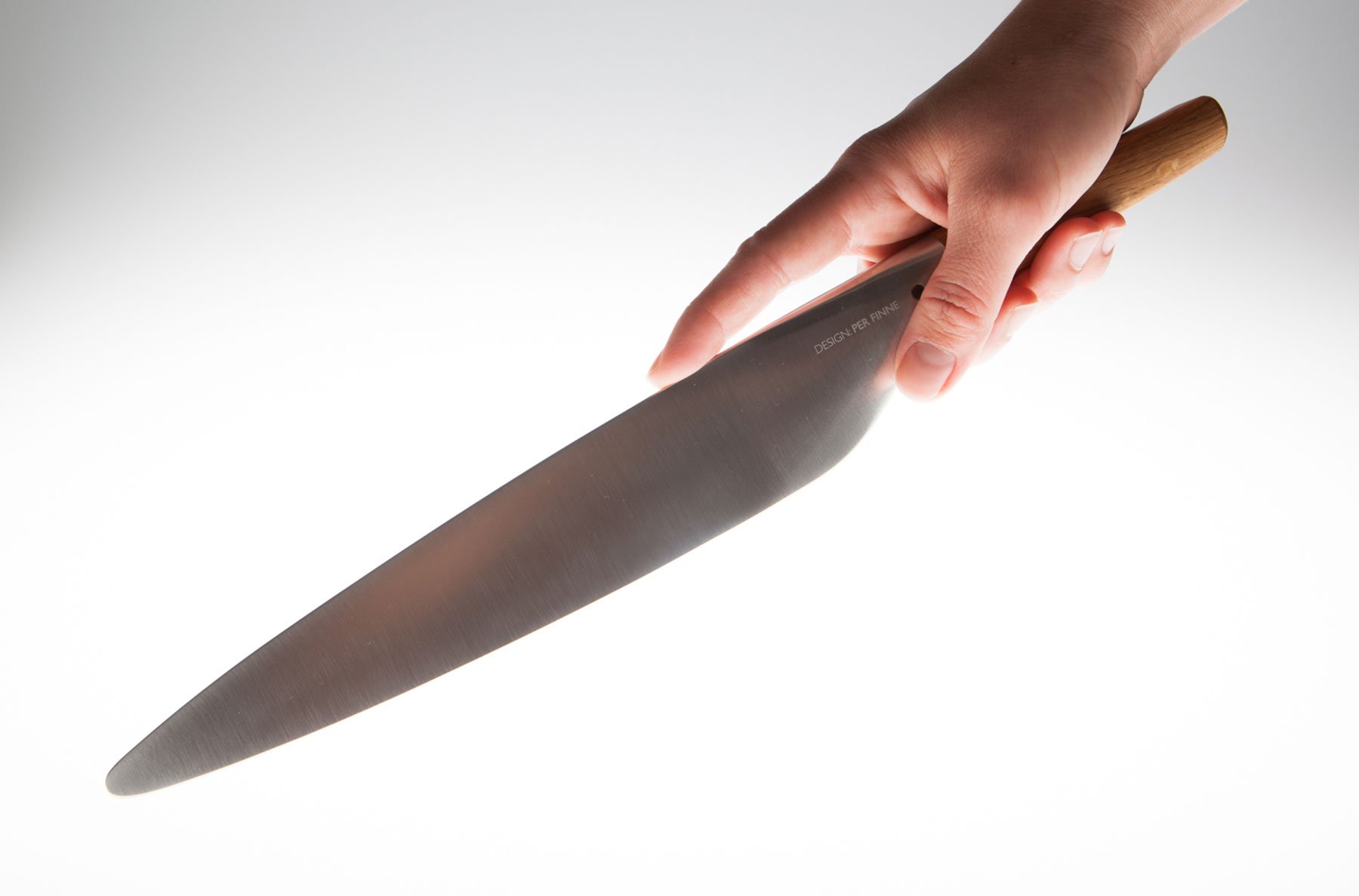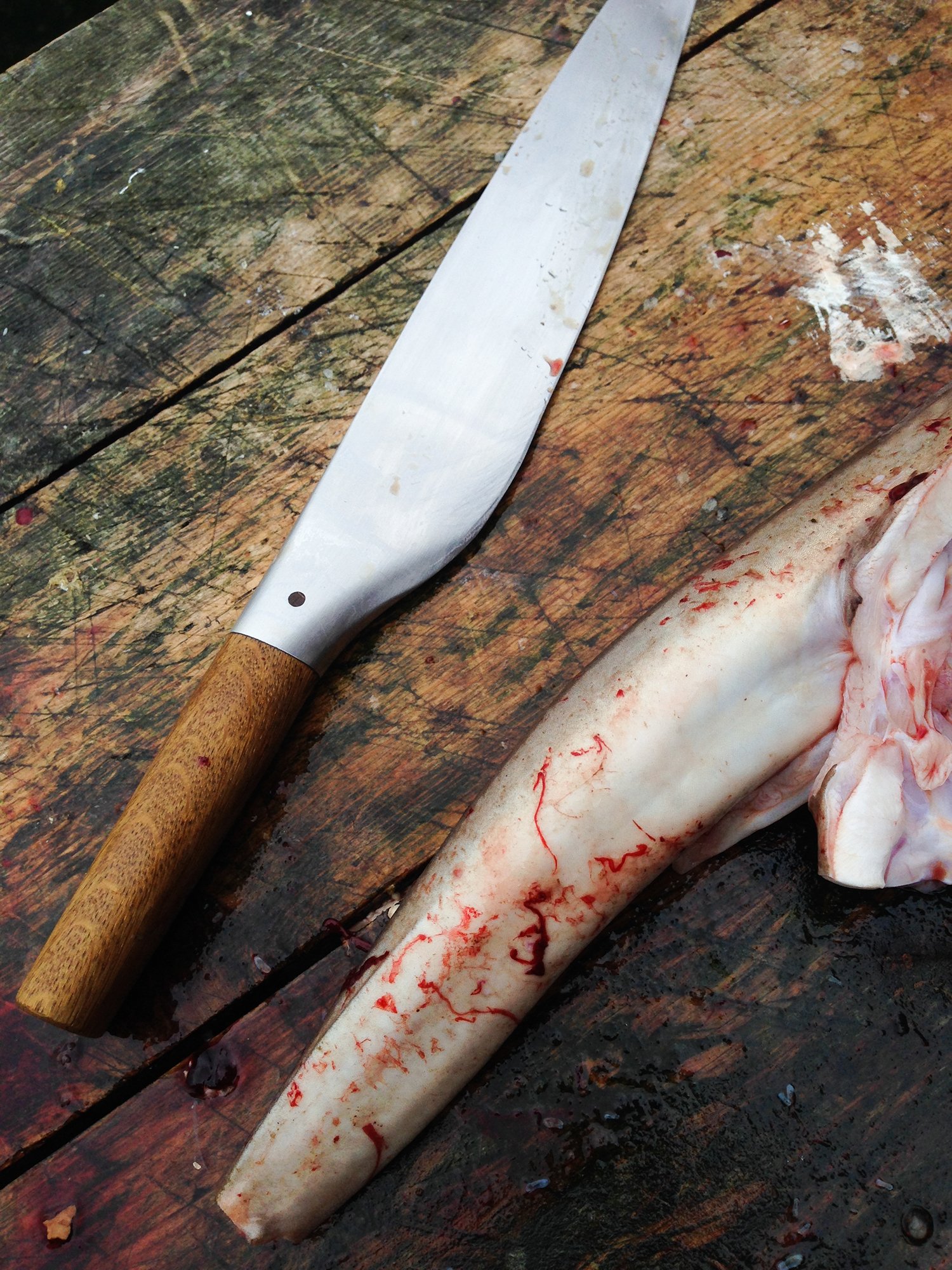Norwegian designer Per Finne’s latest kitchen innovation stems from some of the most fundamental principles of “good design:” the design is an attempt to maximize a product’s lifetime, versatility, and quality overall. The Umami Santoku knife accomplishes all three in an incredibly efficient and simple silhouette. Not only does it have the ability to cut in a variety of ways, “erasing the transition between the handle [and the hand]” to the point that “the knife becomes an extension of the arm,” but it has been made to last.
Inspired by traditional Japanese knife design embodied in the “santoku” multi-purpose knife, which maintains a balance between its grip and short, thin blade to allow for flexibility and a vertical cutting motion, and materials typically found in Norwegian design, Finne has created what he calls a “good knife for life.” While the concept of respect for tools exists in both cultures, Finne says that even more important is “that we can participate in the care of the environment if we reduce the number of products we surround ourselves with, and if we treasure the tools we have.” The choice of a molybdenum-vanadium steel blade and oak grip further adds to the knife’s durability as well as its form, creating an experience that is both tacitly and aesthetically pleasing. Finne plans to manufacture a limited number of 500 pieces, which can be directly purchased through him here.









